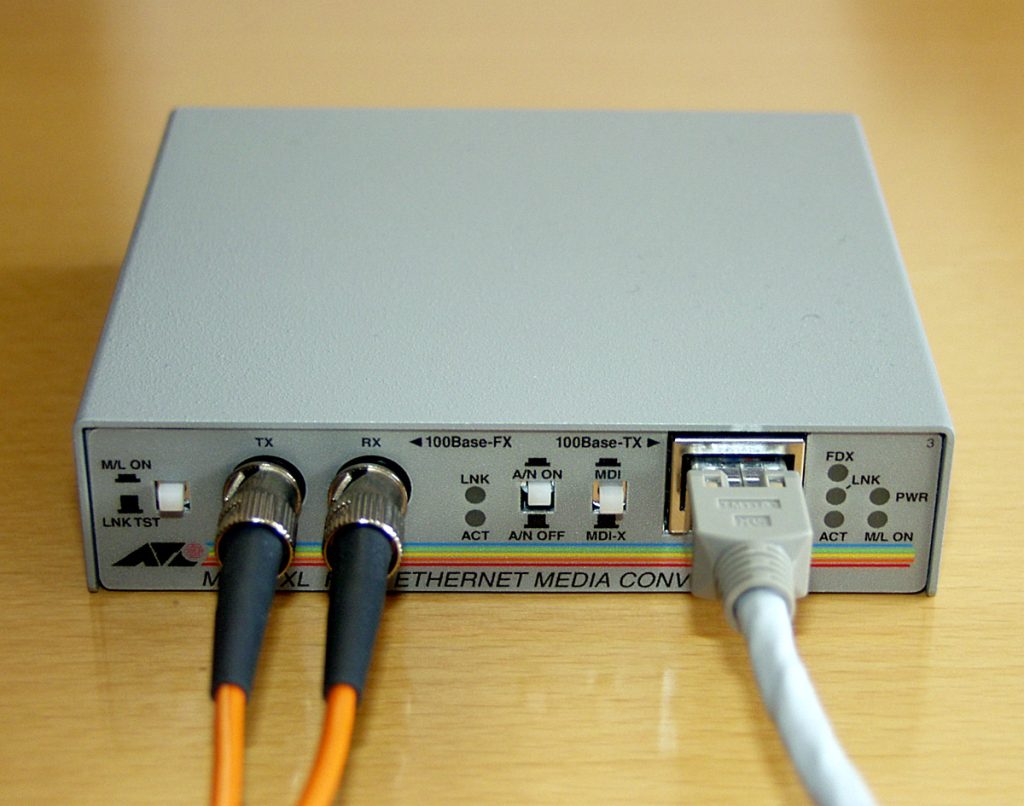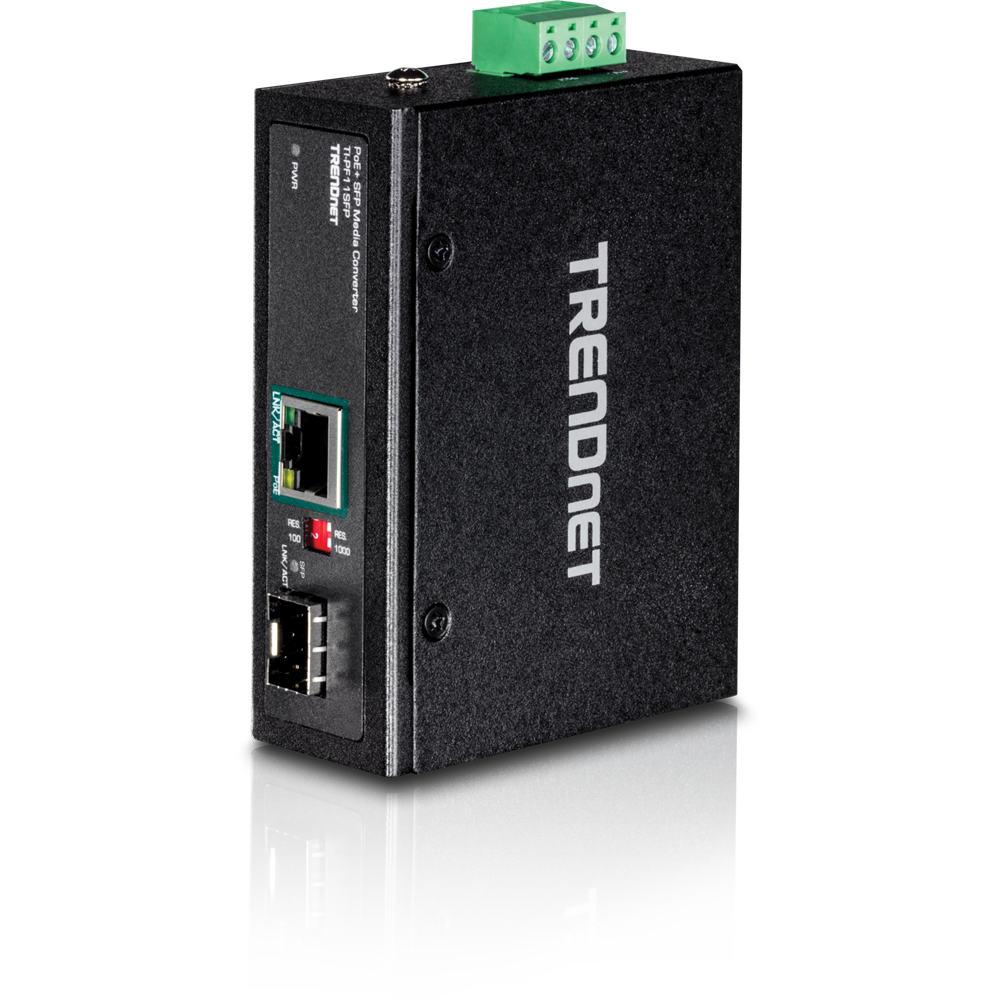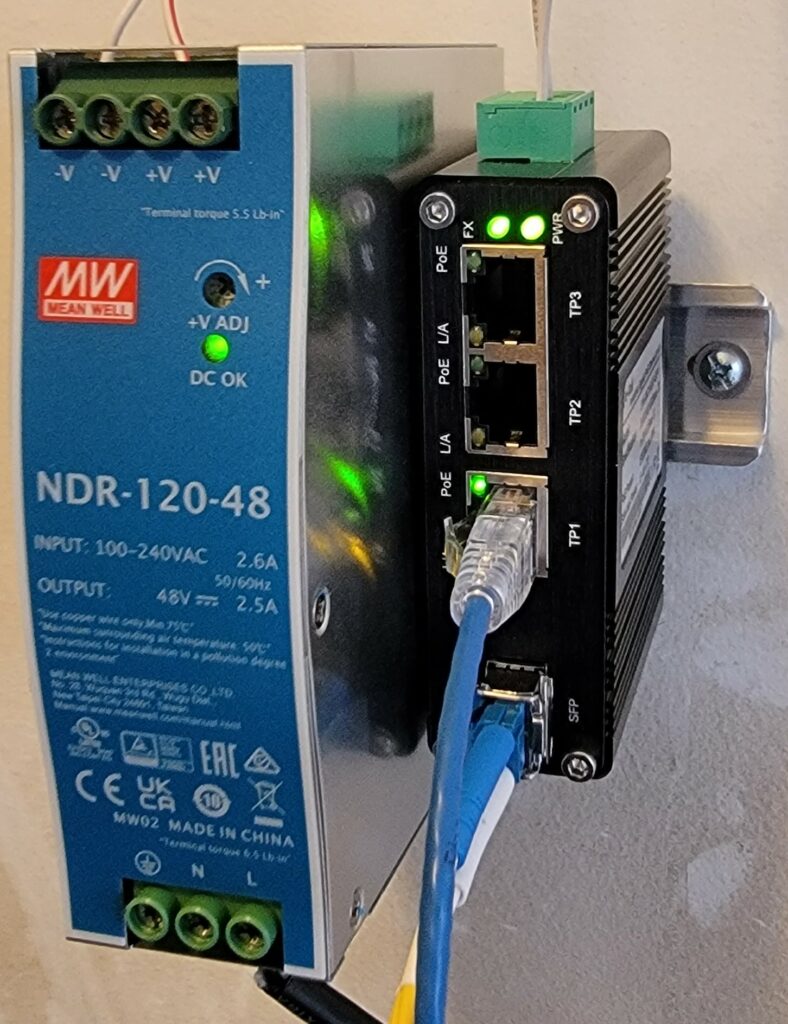Recently I helped design an outdoor wireless network for a state park. This park has over 200 RV spots and even a water park. This was my first opportunity to design an outdoor wireless solution. I was extremely excited about the opportunity. The park had an installation prior to this, but it was done via mesh APs and were 40 feet in the air, so the mesh APs could communicate over the RVs and trees. This isn’t a post about wireless, so I won’t get into the details, but you want your APs much closer to the ground and the users. Needless to say, it was not a good solution and they wanted me and my employer to design a better one. I consulted with individuals in my company and with Cisco to come up with a better solution. The solution required 30 outdoor APs and 1 inside AP for the camp store. I would never recommend a wireless mesh network to anyone, which means that all of our APs would have to be hard wired. This is where our story begins. How do you go farther than 100m with ethernet? Well, the simple answer is fiber. So, you run fiber to every pole, but the APs are copper and require Power over Ethernet (PoE.) How do you provide PoE and a copper connection with fiber to the pole? Media Converter has entered the chat.
What is a Media Converter?

The obvious question now is, what is a media converter (MC)? In short, an MC is a Layer 1 device that converts one type of medium to another. Technically switches that have fiber and copper connections are media converters. Access points as well. But, we don’t go around calling those devices media converters. What we call an MC usually has 2 ports on it. A fiber port and then another port. Most often that is a copper port, but it doesn’t have to be. It can be another fiber port. The MC takes input from one port and converts it to medium of the other port and sends it out. And vice versa. This transformation is done at the physical layer. That means any packets or frames coming in are not “switched” through. Raw input is taken in and raw output is sent out. That means an MC is transparent to the network. Basically it converts light into electricity and vice versa.
Why would I use a Media Converter?

You’re probably thinking, why wouldn’t I just use a switch? That is a great question. There are many uses for a media converter. The most common use today is to provide connectivity to remote cameras and access points. There are some advantages to running fiber to remote devices. The number one advantage is distance. Copper ethernet standards allow for 100 meters of cable. Yes, it’s possible to get farther distances, but to stay in specifications and standards it is recommended that you stay under the 100 meter limit. With fiber you can go much farther. 10 kilometers if needed. Another advantage is lightning arresting. Cameras and APs on poles can be a lightning attractor. If there is a copper connection back to a switch inside a nearby building it could be damaged by a lightning strike on the outside equipment. Since fiber doesn’t conduct electricity you have helped prevent a lightning strike from damaging your equipment. Yes, most likely the device outside is toast, but the more expensive equipment inside are fine. Another advantage is they can provide PoE to power your remote device and provide connectivity to it. And the final advantage we will talk about today is cost. Typically these media converters are much cheaper than a switch. A $500 MC is an expensive MC. Granted, I have seen a few that are a lot more expensive, but that’s rare. We usually see the price between $100 to $250.
As you can see, there are many reasons you might want to use an MC. Each use case is unique and must be evaluated to see if it’s the right choice. Would I do an MC for equipment hanging on the side of a building? That is probably not the best solution. Would I use one in the parking lot of a manufacturing plant? That scenario is perfect for an MC.
What could go wrong?
The title of this post is “Trouble with Media Converters”. So, what are the disadvantages of using an MC over a switch? MCs are unmanaged. There is no CLI or GUI to connect and manage it. They’re either on or off. That’s it. So, say you need to power cycle a piece of equipment that is powered via PoE. To accomplish this task with an MC you must remove the power from the MC. There are some MCs that will turn off the link to one side if the other side goes down. However, the several that I’ve seen that will do this still provide PoE even though the link is technically down. That can be a somewhat frustrating experience at times.
MCs don’t always follow the standards exactly. There can be compatibility issues because of this. I worked on a project where the 1Gbps SFP linked up without issue at 1Gbps. The copper side when connected to a specific model of AP would not establish link higher than 100Mbps. This leads to all kinds of errors and issues. We eventually had to replace all of the MCs to get the project completed. In this particular instance, we had the same model MC and model AP working at another customer. That is why we recommended the MC in the first place. We “knew” it worked. Only, it didn’t and we had to act quickly to find a solution. The only explanation we could come up with is internal chips were changed. The working installation had been installed for a couple of years. It’s entirely possible that even though the models are the same there was a manufacturing change in either the AP or the MC to internal chips or chipsets.
Speaking of compatibility. PoE standards are another. If you require PoE to power the camera or AP you need to make sure that the PoE standards are compatible. And it is very possible your MC doesn’t support PoE at all. When trying to find a replacement the customer picked up one for us to test. When it arrived it didn’t have PoE, so it was useless to us. That type of MC might be perfect for connecting a small out building with a small switch that doesn’t have any fiber ports, but it doesn’t work in the AP or camera setting. Make sure that the PoE standard required by the device on the pole is supported by the MC.
Are there alternatives?

There are alternatives to using an MC. You can put a switch at the remote location. One solution I’ve seen is running fiber to 1 pole and branch copper out from it. Another option is pictured above. An industrial switch. This solution is perfect for when the enclosure at the pole doesn’t have ventilation and you need something that can withstand extreme temperatures. The pictured equipment above can operate in temps above 160 F. I like this solution because it not only provides PoE, but there are other ports that will allow additional equipment if desired. Not to mention the rugged design that allows for extreme temps. Plus, it’s DIN rail capable, as pictured, and can meet lots of requirements for more than just a device on a pole. Think traffic lights and other such devices. This solution is also cost effective. Less than $100 for the above setup. It’s The downside is that it is an unmanaged switch and it’s not an all in one (AIO) solution. I had to assemble the components.
Another alternative available is what’s called Game Changer Cable by Paige Data Solutions. The ethernet standard gives a distance limit of 100m for a specific style of cable. Game Changer Cable is engineered to provide connectivity at farther distances than 100m. “GameChanger Cable can deliver 2.5Gbps and 100W PoE up to 656 feet (200m) or if you need to go farther, GameChanger Cable can deliver 10Mbps and 100W PoE up to 850 feet (259m).” Visit their site for a way more in depth explanation of their product.
Yet another alternative in the camera space are ethernet and PoE extenders. These devices typically run at 10Mbps. Which is sufficient for a lot of cameras. I’ve seen some exclaim to allow 300m distance. These are very similar to the traditional MC, but use copper for transport. Some will use traditional Cat5e or Cat6 cable, while other offerings will allow any kind of wire to get from one end to the other. I’ve seen these in action. I’m not a huge fan of them, but they do work and provide an alternative to running power to a pole to power the MC. Tread carefully in this arena. A lot of claims are just that, claims. They may or may not perform as advertised.
Final thoughts
Media Converters are a cost effective way to provide remote connectivity to devices that are farther than the copper ethernet standard. Especially if those devices do not have a fiber port. They are not always the best solution in every case. It’s best to sit down and think through your requirements and budget. It might double the cost of a camera installation. However, it will be a fraction of the cost of an outdoor AP. Before purchasing anything you should take measurements and design how to accomplish the desired outcome. Because one solution worked in a situation, doesn’t mean it will work in the next. If you have any doubts, reach out to people who have done it in the past or even the manufacturer of the equipment for suggestions. Just be mindful that it might not work, so be flexible in your implementation if at all possible.